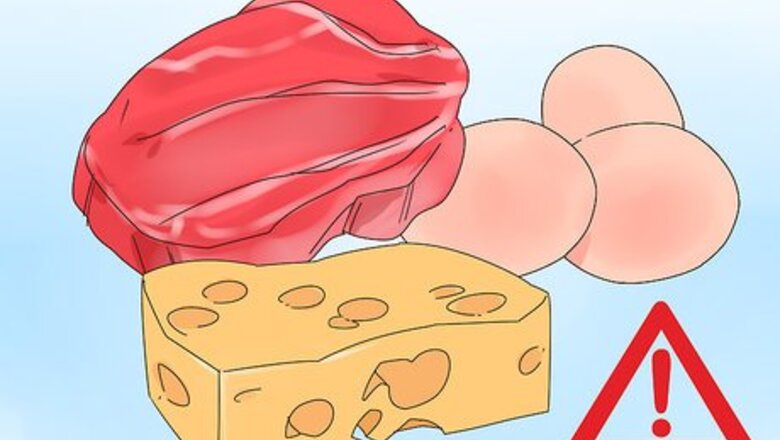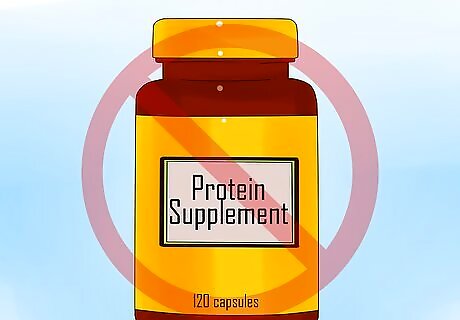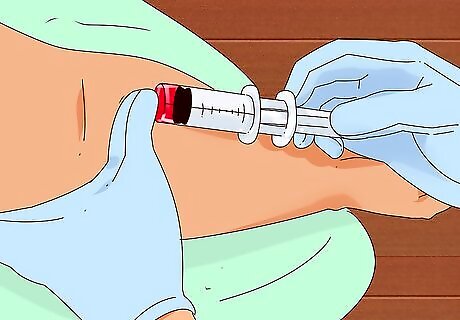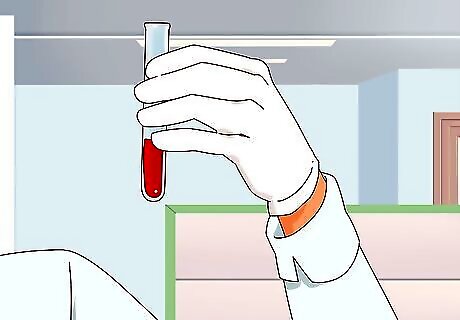
views
Lowering Globulin through Diet

Cut high-protein foods out of your diet to decrease globulin levels. If your doctor has asked you to lower your globulin, avoiding high-protein foods is a great place to start. Protein contains high levels of globulin, so consuming protein-heavy foods will raise your globulin. The recommended daily maximum amount of protein that you should eat is 0.08 g/kg (0.36 g/lb.). Aim to consume slightly less than this amount daily to lower your globulin. Keep in mind that changing your intake of protein will most likely not change your total protein on the A/G test result, but it will affect your globulin levels. Avoid protein-heavy foods like: Red meat and eggs Milk, cheese, and yogurt Hemp seeds and soy

Eat plenty of fruits and vegetables to keep your globulin levels low. Veggies and fruits tend to have low protein levels. This means that they can form the majority of your diet without increasing already-high globulin levels. Avoid eating many servings of canned or processed fruits or veggies, since these are less healthy than natural foods. Build your diet around foods like: Apples, pears, and berries Oranges, grapefruit, and other citrus fruits Root vegetables like beets, turnips, and carrots Broccoli, cauliflower, and peas

Supplement your diet with healthy fats and nuts. If you were to consume a diet comprised only of vegetables and fruits, you wouldn't receive all the nutrients your body needs. To meet your nutritional needs without eating large amounts of proteins, consume foods rich in healthy fats. Eating nuts is also a great way to intake plenty of calories without eating too much high-globulin protein. So, supplement your diet with: Foods made with healthy fats like olive oil, safflower oil, sunflower oil, and soybean oil Nuts including walnuts, cashews, and almonds

Stop using globulin-boosting protein supplements or protein powders. As with most other sources of protein, protein supplements and protein powders are high in globulin. To decrease your blood globulin levels, stop using protein supplements immediately. If you’d like to still build muscle while decreasing globulin levels, talk to your doctor about healthy ways to do this. Protein supplements are especially popular among people who regularly lift weights and are trying to bulk up.
Changing Lifestyle to Lower Globulin

Participate in both aerobic and strength exercises to lower globulin. Daily exercise is one of the best ways to reduce your high globulin levels. If your doctor has recommended that you lower your globulin, make exercising for about 30 minutes a part of your daily routine. You can do all of your daily exercise in, for example, a single 30-minute weight-training session, or do 3 separate 10-minute jogs throughout the day. Aerobic exercises (also called cardio) get your heart pumping and include things like running, swimming, jumping rope, or cycling Strength-training exercises are based around weights and include bench pressing, dumbbell lifting, and squatting

Reduce stress in your life to lower your globulin levels. In addition to having a generally negative effect on your mental health, living with acute stress can increase your globulin levels. Focus both on destressing in the moment and on removing big-picture stressors from your life. Some great ways to destress and calm down include: Practicing meditation or yoga Spending time outdoors or taking a quick walk Listening to relaxing music

Keep your body hydrated by drinking plenty of water every day. When your body gets dehydrated, your globulin levels will increase. Over time, this can result in chronically high globulin levels. Drink plenty of water and other clear liquids (e.g., fruit juices or herbal tea) throughout the day to keep your body well hydrated. Adult men should drink 15.5 cups (3.7 L) of water each day, while adult women should drink at least 11.5 cups (2.7 L).
Undergoing Globulin Testing

Visit your doctor if you experience chronic inflammation on your body. While many underlying conditions can lead to high globulin, it presents relatively few symptoms. One of the main symptoms is inflammation, which is often caused by a buildup of fluids in the extremities. Also visit your doctor if you show signs of liver disease (which often causes high globulin levels). Symptoms of liver disease include: Vomiting and nausea Itching Frequent fatigue and a lack of appetite

Agree to have your A/G ratio tested through laboratory bloodwork. An A/G test will allow doctors to measure the ratio of albumin to globulin in your body. Your doctor will draw blood from your arm and send the blood for lab work and analysis. Follow up with your doctor in 1–2 weeks if you haven’t heard back about the A/G ratio test. Low albumin could suggest a liver disorder, a kidney disorder, a disorder in which protein is not digested or absorbed properly, severe malnutrition, celiac disease or inflammatory bowel disease. A high total protein level might suggest with chronic inflammation, infections, or multiple myeloma. If the doctor put on a tourniquet for too long or if you take estrogen or oral contraceptives, the A/G test results might not be accurate.

Ask your doctor about a serum protein electrophoresis test. This is another type of blood test, in which your doctor will draw blood from your hand or arm with a needle and then send the blood sample to a lab for analysis. Unlike the A/G ratio test, which measures for all types of globulin, the protein electrophoresis test measures only for gamma globulins. Your doctor may suggest this test if they suspect that you have an immune system disorder. You may also need to take this test if your doctor thinks you may have multiple myeloma (a type of cancer).

Discuss the test results with your doctor. In broad terms, too-high levels of globulin indicate types of cancer (e.g., Hodgkin’s diseases or malignant lymphoma), while too-low levels are indicative of kidney or liver diseases. Your doctor will lay out the test results and explain what they mean. High globulin levels can also be caused by dehydration or certain medications. To rule out these possibilities, tell the doctor what medications you’re taking.

















Comments
0 comment